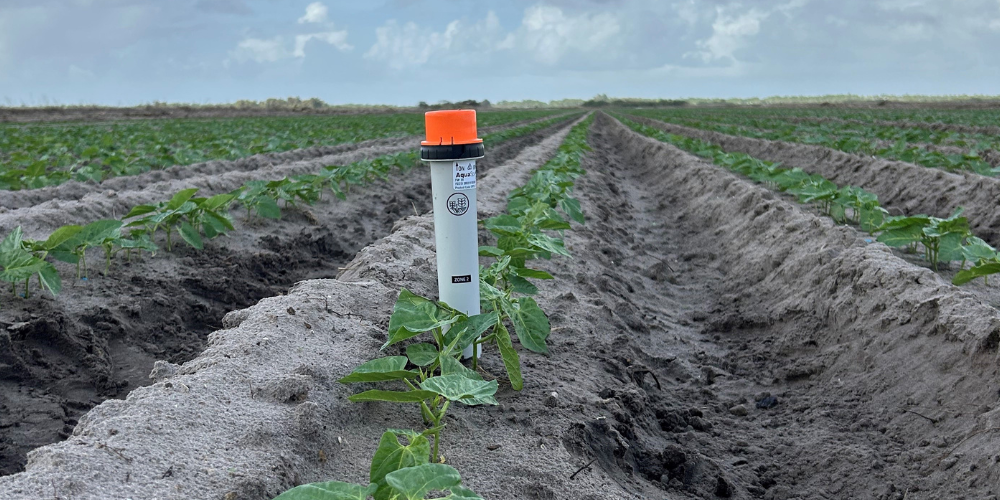Nitrogen Use Efficiency (NUE) FAQ
What is crop nitrogen use efficiency (NUE)?
Crop nitrogen use efficiency (NUE) is the ratio of nitrogen (N) taken up versus the amount applied to a crop. NUE is a frequently used metric to benchmark N management in crops.
What is typical nitrogen use efficiency (NUE) for crops?
Less than half of N is used in most scenarios. Nitrogen is an essential element required for the growth and development of most plants including broadacre row crops including cotton, fruit trees, nut trees, as well as produce. On a global scale, N is agriculture’s most widely used fertilizer nutrient. Studies have shown that crops use only 50% of the applied N effectively, while the rest is lost through various pathways to the surrounding environment. [1]
Why is N use efficiency important?
Fertilizer N is the second largest requirement after water in crop production, making it a large portion of farming input cost. Lost nitrogen negatively impacts a farmer’s return on investment and pollutes the water, soil, and air.
What is the relationship between nitrogen and water management?
Interaction between water- and nitrogen-use efficiency is common in cropping systems. It has been shown that simultaneous improvement of water and nitrogen use affects their efficiency positively. [2]
Biomass production is a function of the relationship between N and water availability, and this relationship has been described as co-limitation (Sadras, 2004). Co-limitation means that the plant growth response to water and N is greater than its response to each factor in isolation, and implies that strategies to maximize plant growth should ensure that both resources are available. In addition, nitrogen transport in the soil and absorption by roots are water limited. Thus, from the perspective of plant physiology or soil availability it is best to optimize N and water management simultaneously. [2]
What are the benefits of increasing nitrogen and water use efficiency simultaneously? Enhancement of water and nitrogen use efficiency simultaneously may provide advantages over optimization of water and nitrogen inputs separately. Water is the driver of the main environmental problems caused by excessive nitrogen use, such as nitrate contamination of water bodies or increasing emissions of the greenhouse gas nitrous oxide. Therefore, management practices oriented towards reducing nitrogen losses and maintaining farm productivity should rely on optimizing nitrogen and water inputs at the same time. [2]
While irrigation does increase the risk of nitrogen leaching of nitrate that’s not taken up by crops, when, properly managed, it enhances the plant nutrient update and growth.[3]
Does oxygen play a role in NUE?
Oxygen plays a key role in the nitrification and denitrification processes.
How can N use efficiency impact soil health?
Researchers have hypothesized that more precise timing and regulation of N use can lead to improved soil health. This is a fairly new research area in the last decade that relies on a better understanding of the interactions and complexities of the agroecosystem and microbial drivers. [5] New research studies utilizing technological advances in collection of real time data from beneath the soil will enable better understanding of these interactions.
Stay tuned for more on this topic! AquaSpy is excited to be working on below-ground continuous sensing technology that will further the understanding of the interactions between nutrient and water use efficiency and the catalysts and participants in that process. Interested in becoming a pilot partner in observing these interactions first-hand?
Please fill out our interest form.
Sources:
- Govindasamy P, Muthusamy SK, Bagavathiannan M, Mowrer J, Jagannadham PTK, Maity A, Halli HM, G K S, Vadivel R, T K D, Raj R, Pooniya V, Babu S, Rathore SS, L M, Tiwari G. Nitrogen use efficiency-a key to enhance crop productivity under a changing climate. Front Plant Sci. 2023 Apr 18;14:1121073. doi: 10.3389/fpls.2023.1121073. PMID: 37143873; PMCID: PMC10151540.
- Miguel Quemada, Jose L. Gabriel, Approaches for increasing nitrogen and water use efficiency simultaneously, Global Food Security, Volume 9, 2016, Pages 29-35,ISSN 2211-9124, https://doi.org/10.1016/j.gfs.2016.05.004.
(https://www.sciencedirect.com/science/article/pii/S2211912416300232) - ten Damme, L., Jing, S., Montcalm, A. M., Jepson, M., Andersen, M. N., & Hansen, E. M. (2022). Proper management of irrigation and nitrogen-application increases crop N-uptake efficiency and reduces nitrate leaching. Acta Agriculturae Scandinavica, Section B — Soil & Plant Science, 72(1), 913–922.
https://doi.org/10.1080/09064710.2022.2122864

